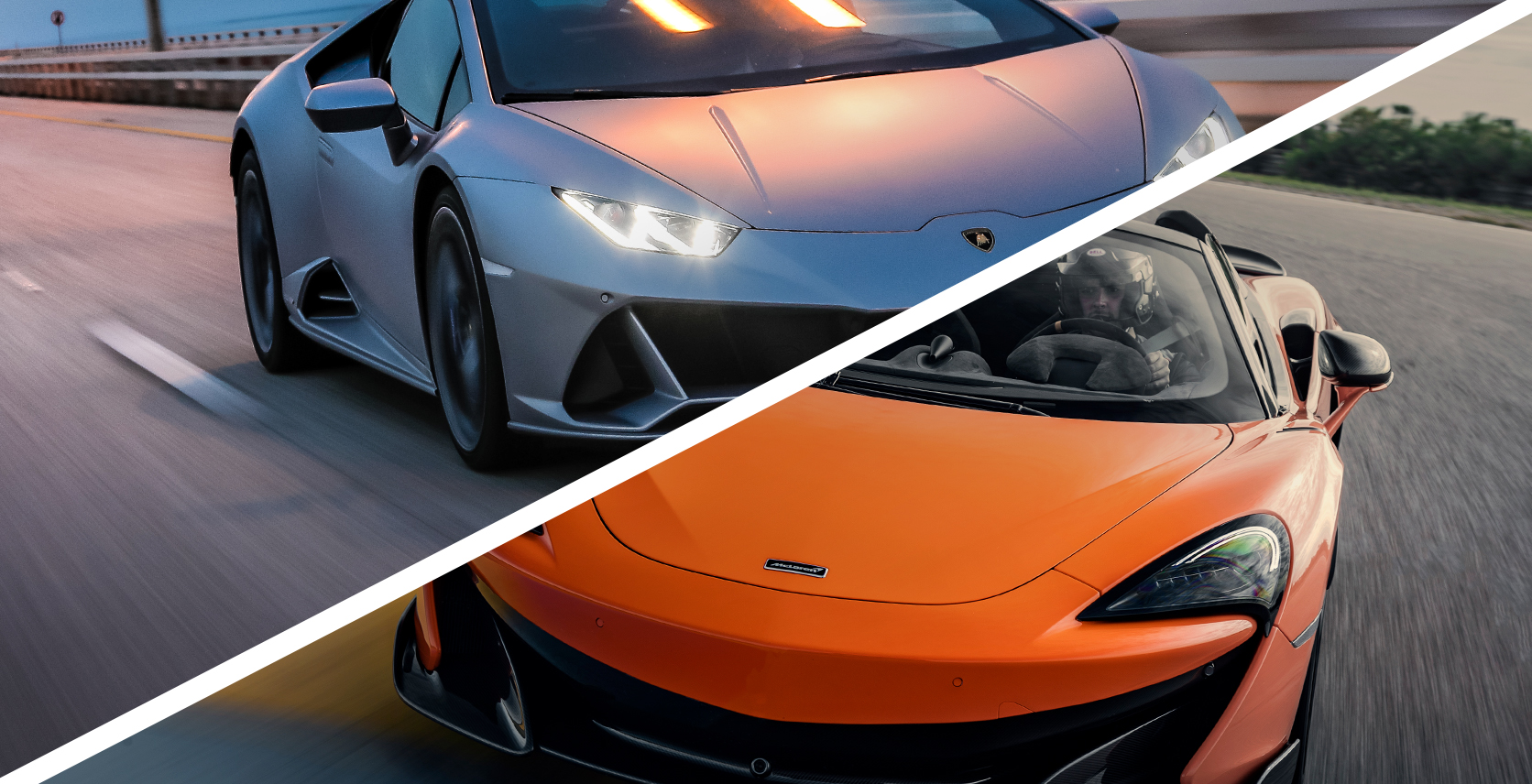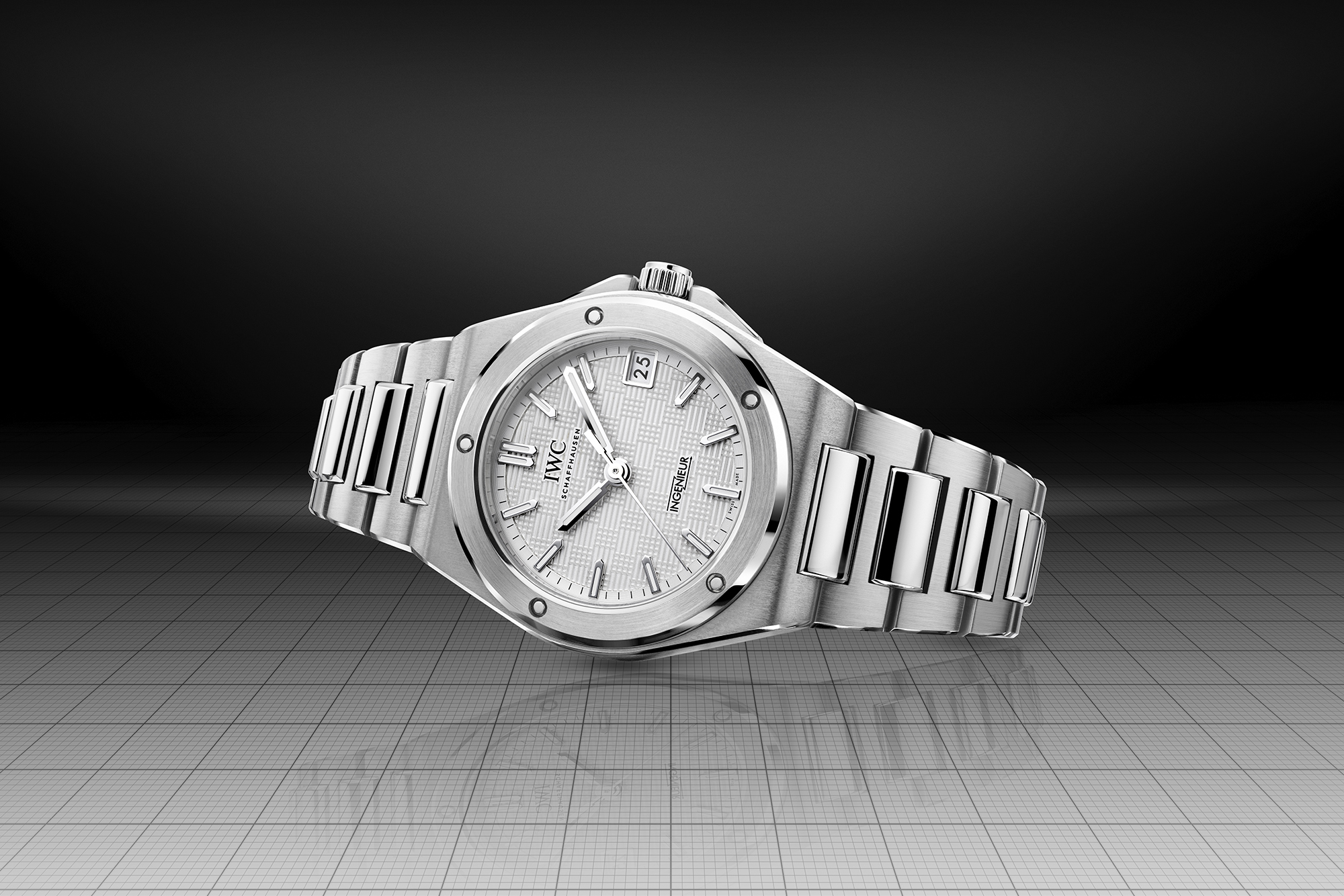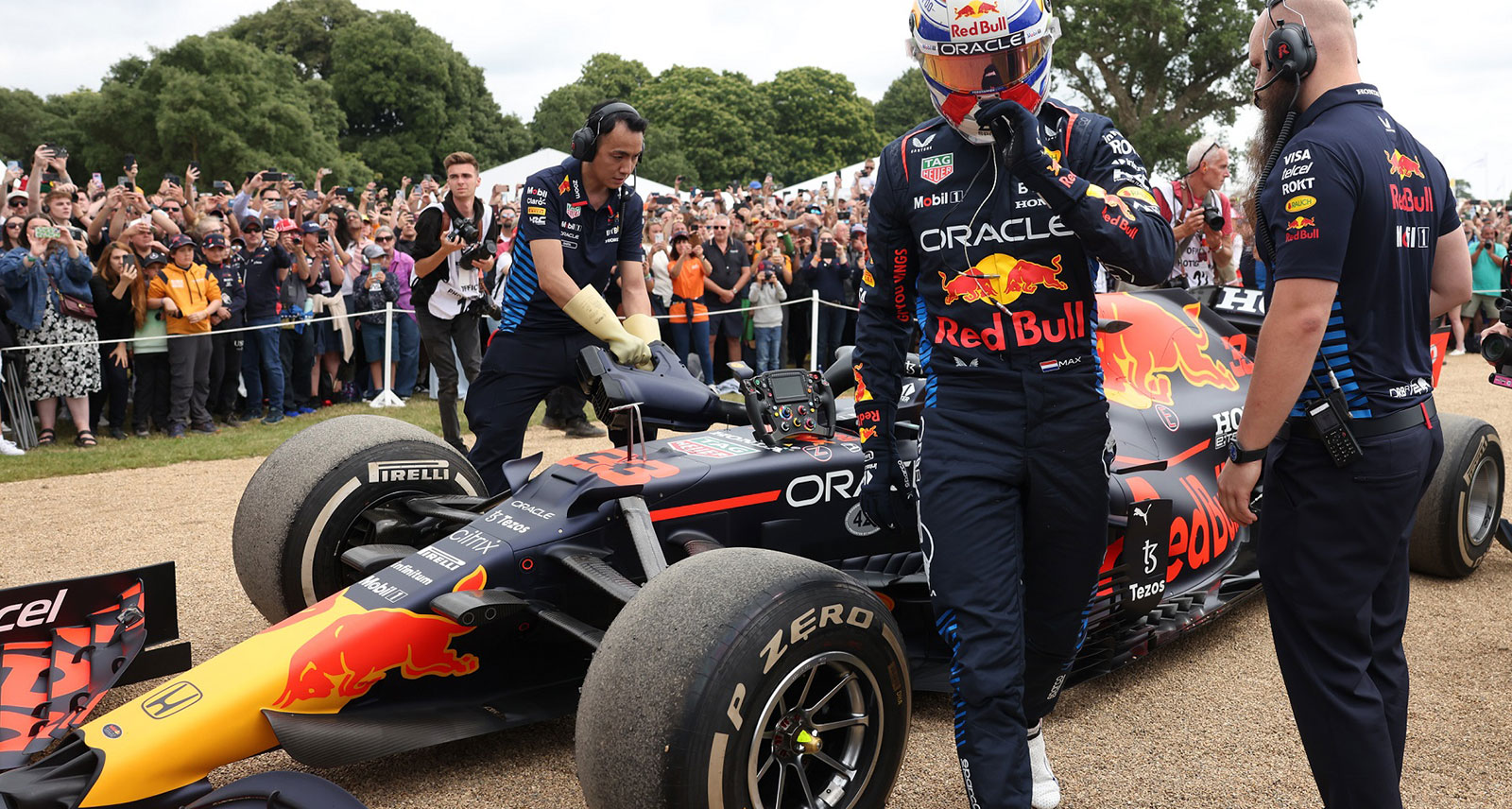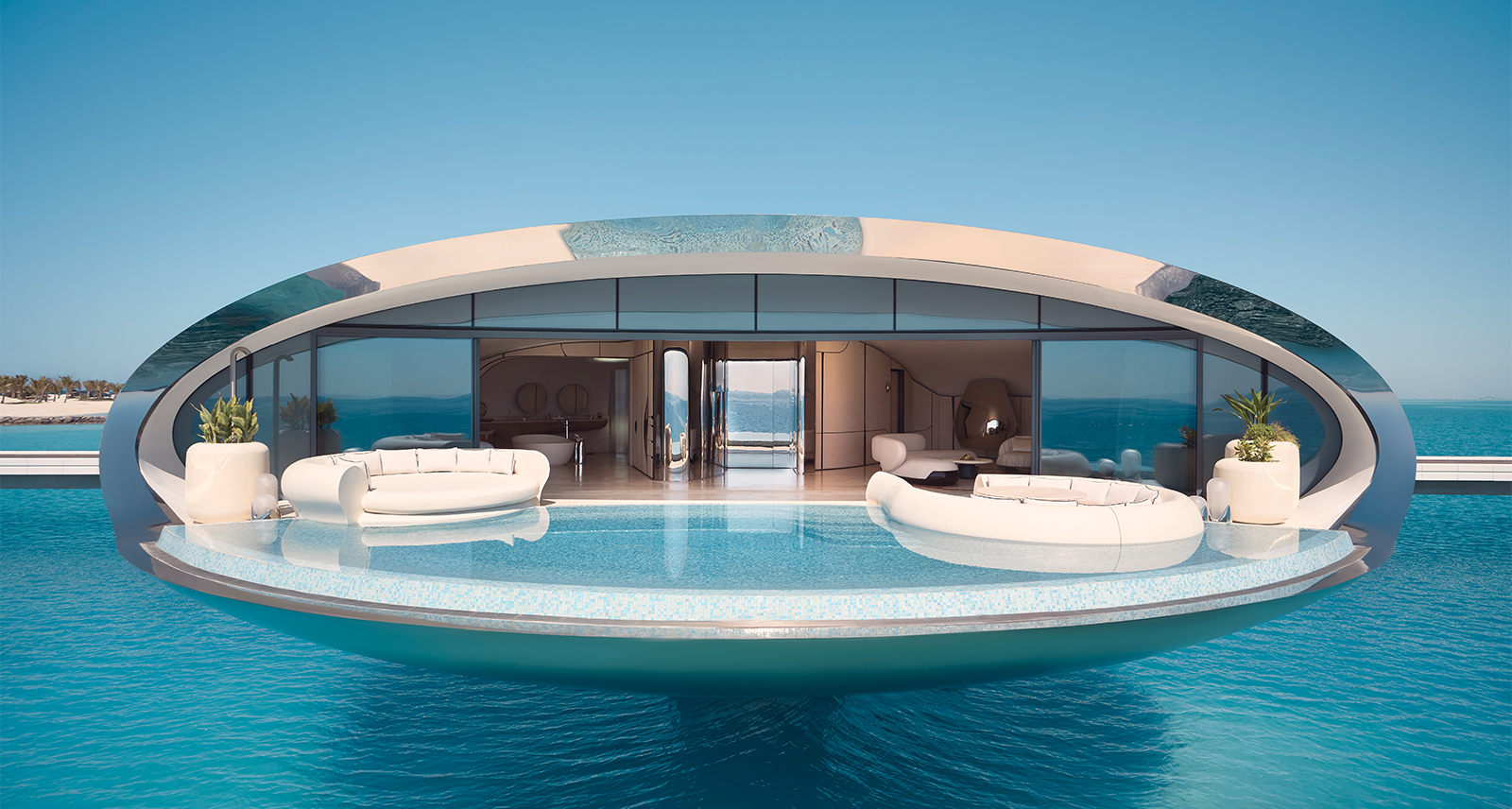Supercar Showdown: McLaren’s 600LT Spider vs. Lamborghini’s Huracán Evo
McLaren and Lamborghini rev up their battle of the supercars.
Lift Off:
Mclaren’s 600LT Spider Is Light Enough to Fly
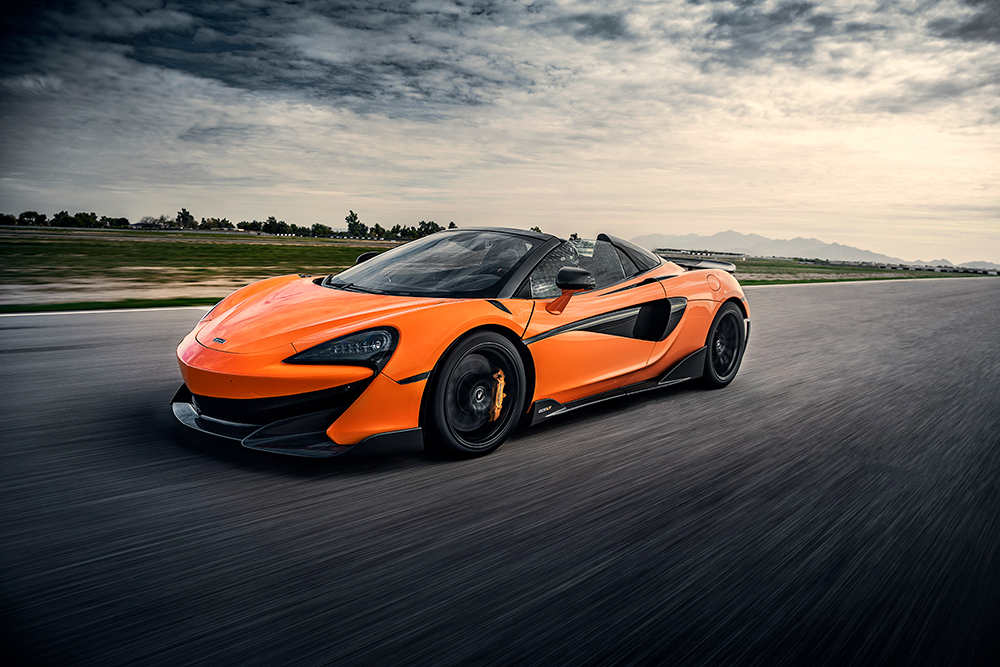
Call me Maverick. There are not many machines that can outgun McLaren’s new 600LT Spider when it’s firing down the back straight at a racetrack in the Arizona desert. An F-35 Lightning II fighter jet, however, is one of them.
Three F-35s take off in formation from Luke Air Force Base, just outside Phoenix, AZ. The main runway is directly behind the racetrack and visible from the driver’s seat of the McLaren. Even inside the car, the roar from the fighter jets on full afterburners drowns out every other sound. We just got Top Gun-ned.
As far as land-based machines go, however, McLaren’s new drop-top track-day toy is about as speedy as they come, and not just in a straight line. Like all of McLaren’s LT “Longtail” models, the 600 is all about ripping around corners and pulling maximum G-forces on the racetrack. It’s lighter, faster, wider, and stiffer than the 570S. The car’s carbon tub was so stiff, in fact, that they chopped the roof off without having to add any additional structural bracing.
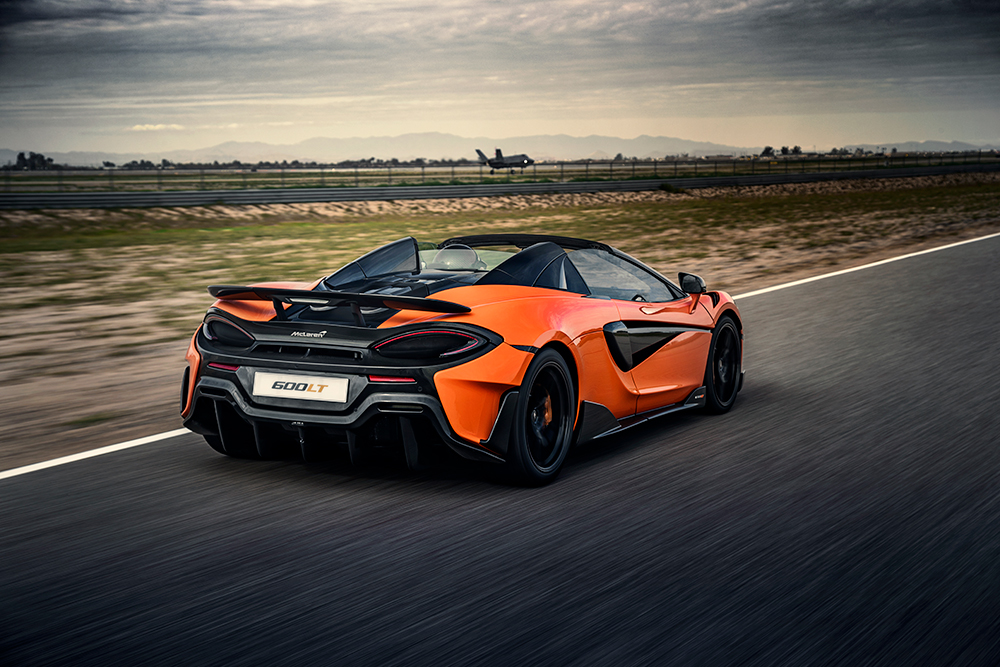
McLaren is obsessive about lightness. It’s the motorsport pedigree. Weight is shed everywhere: titanium wheel bolts save 0.42 kilos, the carbon fenders, 1.2 kilos — the list goes on like this. Ultimately, they stripped out 100 kilograms from the already-featherweight 570 Spider.
The LT is fully street-legal, but using it as daily transport is like using an F-35 for a long-haul across the Atlantic. The carbon bucket seats grip you tightly. The 3.8-litre twin-turbo V8 — here, tuned up to 592 horsepower — barks through a new top-exit exhaust. If you squint, you can imagine they’re afterburners. Punch it, and the rear-wheel drive LT rips from 0–100 km/h in 2.9 seconds.
For the money, there’s nothing else as furious, as focused, as sharp as the LT. There’s no delay, no slack to any of the controls. It’s a precision instrument. You’d better be ready when the turbocharged torque hits, because it can easily overwhelm the Pirelli Trofeo R tires. The good news is that you’ll feel it coming, because the car speaks to you through the controls. It’s so intuitive that any pilot can jump in and fly into the danger zone.
The Good Twin:
The Evo May Look Like Its Predecessor. But Don’t Be Fooled
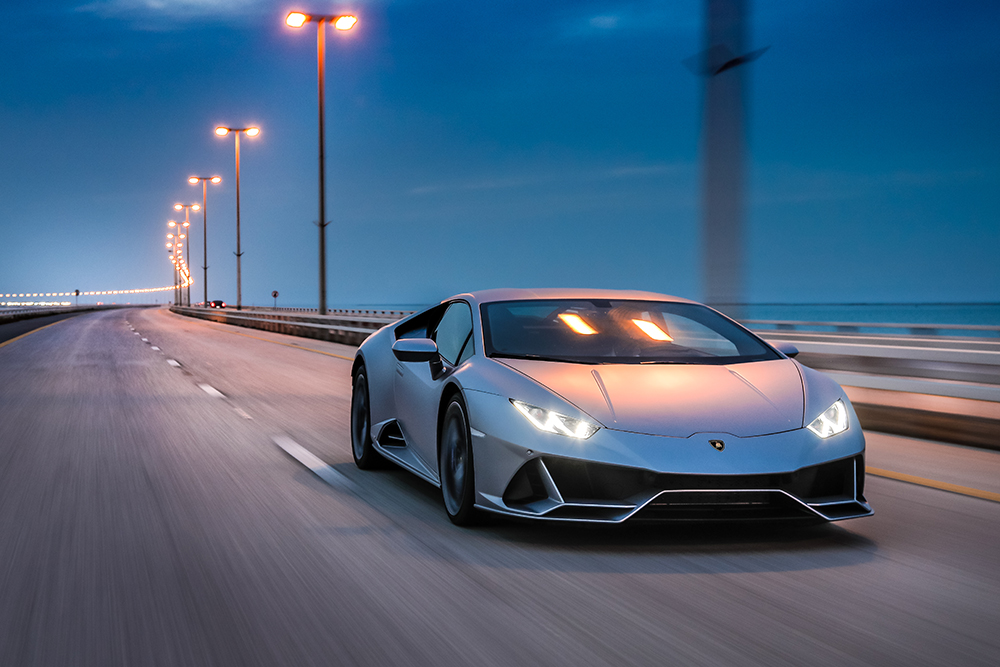
The old Lamborghini Huracán wasn’t a bad car. But put it head-to-head against the revised Huracán Evo on a slalom course or the Formula One circuit in Bahrain — as we did — and you’d swear the Evo feels not just better, but like an entirely new car.
It’s weird, because, from the outside, the old Huracán and new Huracán Evo might as well be identical twins. But the Evo attacked the slalom course, whereas the old car felt a bit like it was being attacked. The new car’s front end just sticks, instead of edging into understeer. A blip of the throttle now wakes up the rear end, bringing the whole chassis to life. The old car preferred to corner neutrally, as if on rails, which is fast but not especially fun. The Evo on the other hand, will happily drift on command, smoking tires and shaking its tail like an overexcited puppy. Changing direction, it feels so much lighter and smaller, pivoting around the driver.
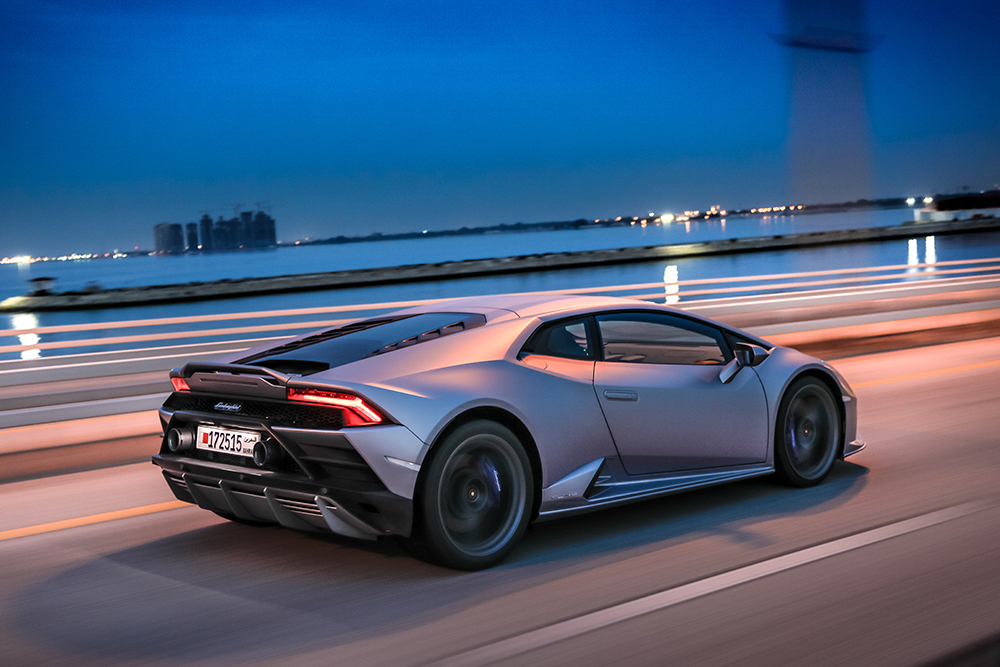
None of this makes sense. The Evo is not smaller or lighter. Yes, it now has more power — taking the 631 hp, 5.2-litre V10 from the Huracán Performante — but that doesn’t explain the handling transformation. We spoke to Lamboghini’s engineers, who explained the magic is largely thanks to a new computerized brain that controls every piece of active tech: suspension, engine, four-wheel drive, brakes, stability control, and on and on. The brain — Lamborghini Dinamica Veicolo Integrata — also controls a new rear-wheel steering system, which no other car in this class has. The Evo’s new computer brain effectively predicts what the driver intends in a feed-forward loop. I intended to come off as a driving god, and that’s what the Evo made me feel like. The fear with digital systems like this is that the car will feels artificial, but that’s not the case here.
The team’s goal, said Lambo’s R&D boss Maurizio Reggiani, was to make a car that was as thrilling as it looked, one in which every single horsepower can be used to make the car more fun. Lamborghini transformed its entry-level supercar from a quick-ish boulevard cruiser into a bona fide, hooligan-friendly supercar. Combine that with the spine-tingling noise from the V10, and you’ve got our favourite Lamborghini since, well, maybe ever.
